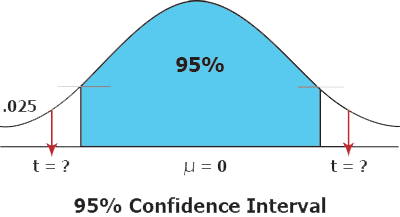Archival Notice
This is an archive page that is no longer being updated. It may contain outdated information and links may no longer function as originally intended.
Home | Glossary | Resources | Help | Contact Us | Course Map
In a statistical context, populations are defined by parameters such as mean and variance. These parameters are estimated from the data obtained from population samples. Here we are interested in the frequency of an allele in the population, estimated from its proportion in the sample set. As the sample size increases, the estimate will become a more dependable measure of the true frequency of the allele in the population.10 Classical statistics deals with the relationship between sample size and the reliability of a parameter estimate by calculating a confidence interval, which furnishes a range of plausible values for the unknown parameter.
Confidence Interval |
|---|
z√[p(1-p)]/n Where z is found from statistical tables and depends on the desired range (e.g. 95%); and p is the proportion observed in the sample of size n |
Watch a video on confidence intervals presented by Greggory LaBerge.
See the YouTube Terms of Service and Google Privacy Policy
Watch a video on estimation presented by Greggory LaBerge.
See the YouTube Terms of Service and Google Privacy Policy
Additional Online Courses
- What Every First Responding Officer Should Know About DNA Evidence
- Collecting DNA Evidence at Property Crime Scenes
- DNA – A Prosecutor’s Practice Notebook
- Crime Scene and DNA Basics
- Laboratory Safety Programs
- DNA Amplification
- Population Genetics and Statistics
- Non-STR DNA Markers: SNPs, Y-STRs, LCN and mtDNA
- Firearms Examiner Training
- Forensic DNA Education for Law Enforcement Decisionmakers
- What Every Investigator and Evidence Technician Should Know About DNA Evidence
- Principles of Forensic DNA for Officers of the Court
- Law 101: Legal Guide for the Forensic Expert
- Laboratory Orientation and Testing of Body Fluids and Tissues
- DNA Extraction and Quantitation
- STR Data Analysis and Interpretation
- Communication Skills, Report Writing, and Courtroom Testimony
- Español for Law Enforcement
- Amplified DNA Product Separation for Forensic Analysts


